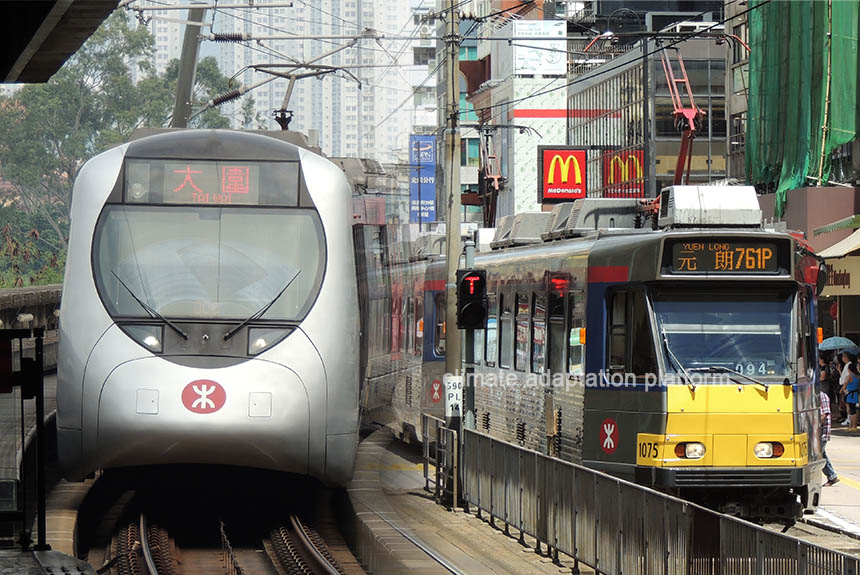The interconnectedness of multiple modes of transportation, such as trains, buses, ferries, and tram systems, in cities and urban areas is growing. Climate change is increasing the frequency and intensity of extreme events that could disrupt the interconnectedness of these transportation networks.
The study by Shauhrat S. Chopra and Zizhen Xu, published in the scientific journal Nature Communications on 18 July 2023, finds that interconnected transportation systems improve resilience by reducing topological vulnerabilities, increasing attack tolerance, and enhancing post-disruption interoperability.
The paper “Interconnectedness Enhances Network Resilience of Multimodal Public Transportation Systems for Safe-to-Fail Urban Mobility” investigates the role of interconnectedness in enhancing the resilience of public transportation systems in Hong Kong, a city heavily reliant on public transit. Hong Kong’s multimodal public transportation network includes MTR, light rail, franchised bus, green minibus, ferry, and tram systems.
The study explores how interconnectedness improves the resilience of multimodal public transportation systems in cities. It focuses on creating “Safe-to-Fail” systems that can withstand disruptions and failures while providing reliable mobility options, which means that the transportation network is designed to absorb and adapt to challenges like extreme climate change events and disasters and can still operate and function.
The study also examines how integrating and coordinating various transportation options, such as subways, trains, trams, buses, and even non-motorised modes like cycling or walking, can create a resilient and adaptable urban transportation system. Improving interconnectedness ensures that even if one part of the system fails or encounters an issue, other components can compensate, creating more mobility options for residents, and these available options increase the resilience of the urban transportation network.
“Cities around the globe, including Hong Kong, are fortifying their resilience to extreme weather events while simultaneously pushing forward with their sustainability and climate change mitigation targets,” Prof. Chopra explained. This requires revamping urban planning strategies and overhauling infrastructure systems to guarantee long-term sustainability and short-term resilience (Groundbreaking Study, 2023).
According to the article in the City University of Hong Kong School of Energy and Environment, where Prof Chopra works as an Assistant Professor, “The study underlines the potential hazards of disruptions in Hong Kong’s public transport system, a critical infrastructure that accommodates 90% of daily passenger trips. Any significant interruption could trigger cascading impacts on the city’s economy, public health, and security.”
However, the research isn’t just about highlighting vulnerabilities. It presents a silver lining by revealing the resilience of highly interconnected transportation networks (Groundbreaking Study, 2023).
Dr. Zizhen Xu and Prof. Chopra found that these multimodal networks can mitigate topological vulnerabilities, enhance tolerance against disruptions, and improve post-disruption interoperability (Groundbreaking Study, 2023).
Read the study by clicking the link in the “Source” section below.
Sources:
Xu, Z., Chopra, S.S. Interconnectedness enhances network resilience of multimodal public transportation systems for Safe-to-Fail urban mobility. Nat Commun 14, 4291 (2023). https://doi.org/10.1038/s41467-023-39999-w
Groundbreaking Study on Hong Kong’s Urban Infrastructure Published in Nature Communications. (2023, October 6). CityU. Retrieved from https://www.cityu.edu.hk/see/outreach/news-center/groundbreaking-study-hong-kongs-urban-infrastructure-published-nature



Leave a Reply